Where a relatively small quantity of fluid is supposed to be pumped and where delivery pressure is quite large, reciprocating pumps come to help us. These pump designs handle a full range of liquid characteristics, including low viscosity chemicals, high particle content slurries, and high viscosity liquids. Types of reciprocating pumps are placed in different categories and several factors play an essential role in choosing the best reciprocating pump based on your application. Here is a brief guide to various types of this positive displacement pump. Keep reading to learn more and more!
The reciprocating pumps are classified in five ways:
According To The Configuration Of The Pumping Element
-
Piston Pumps
Piston pumps are the most famous and common types of reciprocating pumps in which the high-pressure seal rotates with the piston. They are great for pumping the fluid at high head areas. These types of pumps are used to move liquids or compressed gases. The two-piston pumps are lift and force pumps operated by hand or by the engine.
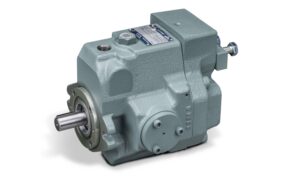
-
Plunger Pumps
These reciprocating pumps use a plunger instead of a piston. A high-pressure seal is fixed and a smooth cylindrical plunger is passed through the seal. In these pumps, the movement of the piston is the same as the piston. Plunger pumps are best for applications to pump saltwater, chemicals, oil, etc.
These pumps have a compact design, low weight, low density, high durability, and easy maintenance. They also have high resistance to impact, thermal shock, vibration, and abrasion. Plunger pumps are used in the beverage, food, petrochemical, gas, oil, nuclear, mining, and medical industries.
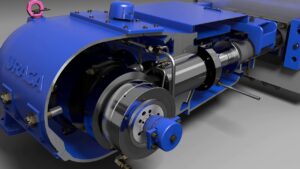
-
Diaphragm Pumps
Also known as membrane pumps, diaphragm pumps utilize a Teflon, thermoplastic, or rubber diaphragm or membrane. A diaphragm is surrounded by valves. They work by temporarily generating a vacuum. Diaphragm pumps have no rotating seals, are physically compact, and are either air-operated or electric.
They range in size from industrial units used in permanent installations to small portable contractor pumps used for site jobs. These are ideal for corrosive and abrasive fluids, hazardous environments, where space is limited, and portability is required. Diaphragm pumps are commonly used for such as sludge transfer, oil transfer, acid pumping, and chemical fluid transfer.
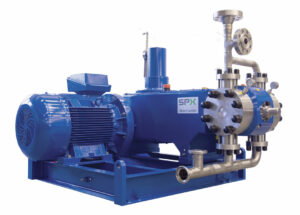
According To The Source Of Work
-
Simple Hand-Operated Reciprocating Pumps
They are the simplest and cheapest types of reciprocating pumps. Simple hand-operated pumps can give a continuous supply of water that is sucked from the ground through a strainer, which removes sand, clay, and other impurities up to a reasonable limit. They are usually used when the water table is 6.0 m or so from the ground level. These pumps must be primed before they will operate and are limited to suction lifts of about 20 ft. The simplest example is the bicycle pump, which is used ubiquitously to inflate bicycle tires and various types of sporting balls.

Power-Operated Deep Well Reciprocating Pumps
These pumps are similar to hand-operated reciprocating pumps, with the difference that their piston is kept below the water table and secondly, they are operated by power instead of hand. They are used to lift the water when the depth of the water table is more than 6.0 m or so. As the cylinder is kept below the water table, these pumps have only to lift the water. No suction pipe is provided in these pumps. The strainer is directly fixed to the cylinder. Deep-well reciprocating pumps are widely used for oil wells.

According To The Mechanism or Use Of Piston Sides
-
Single-Acting Reciprocating Pumps
In these pumps, only one side of the piston engages to displace the fluid. In single-acting pumps, a piston moves inside a cylinder with the help of a piston rod operated by a wheel through the connecting rod. They have one suction valve and one delivery valve. When the piston is moved backward in the cylinder, a vacuum is created that carries the opening of the suction valve, and when it moves forward, the delivery valve opens up to discharge the liquid.
In this way, the flow of fluid is not constant but is intermittent and gives vibration, shock, and loss of energy. This condition can be partly overcome by using double-acting pumps. The simplest example of these pumps would be a piston syringe.
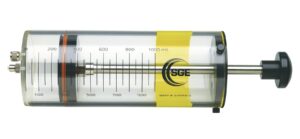
-
Double-Acting Reciprocating Pumps
These types of reciprocating pumps engage with both sides of the piston to displace the fluid. With each stroke, both suction and expulsion happen simultaneously. When the piston moves backward, it sucks the liquid while it moves forwards, then it reduces the volume of the fluid and pressurizes it. Thus they require two inflow pipes and two outflow pipes with attached valves in one complete revolution of the crank.
The discharge in these pumps depends on the number of revolutions per minute of the pump and the efficiency varies from 40 to 85 percent. Some of the common applications of these kinds of pumps are saltwater disposal, well service, descaling, hydraulic fracturing, and oil and gas pipelines.
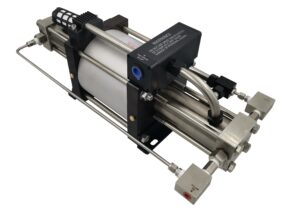
-
Double-acting Air and Steam Pumps
These are double-acting pumps where steam, air, or gas is used to transmit power to the liquid through the piston. The ratio of total steam force (steam pressure per unit area x area of the steam piston) to total liquid force (pump head x area of the liquid piston) helps determine the efficiency with which the pump produces pressure.
They can operate at any point of pressure and flow, within a flexible range. Because of these features, steam-driven pumps are mostly used in the refineries for pump-out service, and high viscosity and high-temperature hydrocarbons.
According To The Numbers of Cylinders
-
Single-Cylinder Reciprocating Pumps
For pressurizing the water, these types of reciprocating pumps use only one cylinder which is connected to a shaft. They may be either a single-acting or a double-acting pump. These pumps have less efficiency than double-cylinder pumps, but have low prices and require less maintenance.
-
Double-Cylinder Reciprocating Pumps
Also known as two throw pumps, they have two single-acting cylinders connected to a shaft. Cranks are set at 180° to each other and connected to the two pistons. Each cylinder consists of suction and a delivery pipe with valves and a separate piston or plunger. Their main advantage is a more uniform discharge as compared with a single-cylinder pump.
Double cylinder pumps have two possibilities: having two cylinders with two separate pistons and having two cylinders in line but with one single piston.
-
- In the first case when two cylinders with two separate pistons, each equipped with one suction and delivery pipe with attached valves both the piston moves in the cylinder at the same time.
- In the second case where one piston is for two cylinders have one suction pipe and one delivery pipe. In this arrangement when the piston moves suction is done through one cylinder and delivery of liquid takes place by the second cylinder.
-
Triple-Cylinder Reciprocating Pumps
As the name of these pumps suggests, they use three connections to one shaft cylinders for pressurizing the fluid. Each cylinder is provided with a suction and delivery pipe with valves and a separate piston or plunger. The three plungers or pistons are driven simultaneously by cranks which are set at 120°. Triple-cylinder or three-throw pumps consist of three plungers or pistons, to reduce the pulsation of a single reciprocating pump.
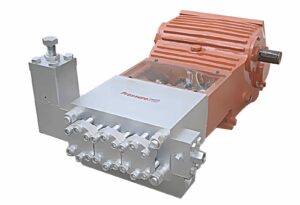
-
Duplex Cylinder Reciprocating Pumps
They are also known as four-throw pumps. In this case, two double-acting single cylinder pumps or maybe two double-acting double cylinder pumps are arranged. This arrangement is working with two cranks, each piston-cylinder arrangement has a separate crank that is set at 90°.
-
Quintuplex Cylinder Reciprocating Pumps
Also known as five-throw pumps, they have five single-acting cylinders driven by cranks at 72 degrees. The entire cylinder has separate suction and delivery pipes with appropriate valves. These pumps act well in high-pressure tasks. Common applications of which are in cement slurries, sand-laden fluids, crude oil, acids, mud, and other oil well-servicing fluids.
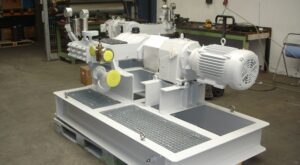
According To The Air Vessel
-
Reciprocating Pumps With Air Vessel
Some reciprocating pumps are provided with a separate air vessel attached to the suction and delivery valve. The purpose of using the air vessel is to build up an excessive quantity of water by compressing the air in the vessel and to obtain a continuous discharge of the fluid at a uniform rate from the reciprocating pump. Also, they are used to save the power required to drive the reciprocating pump. This is because by using air vessels, the acceleration and friction heads are reduced.
-
Reciprocating Pumps Without Air Vessel
A few reciprocating pumps lack air vessels because of the nature of their work. For example, the reciprocating boiler feed pumps do not contain air vessels as they may initiate air into the deaerated water. In reciprocating pumps without air vessels, the friction head in the delivery pipe is maximum at the crank angle of 90°. As per the work requirement at the domestic place, these types of pumps are used.
Conclusion
Reciprocating pumps come in a variety of styles, shapes, and sizes. The specific type of these pumps chosen for an application takes into account the pressures encountered, the flow rates needed, measurement and control systems, fluid viscosity and corrosivity, pipe material, etc. Careful attention should be given to the application before selecting a reciprocating pump. Selecting the wrong type for a job may result in damage to equipment, piping, systems, and possibly endanger personnel.
So now, we hope that we have cleared all your doubts about different types of reciprocating pumps. If you still have any doubts, you can contact us or ask in the comment section below. Have we missed out on including a type? Let us know and we will be happy to include it in our list! If you have any questions, don’t hesitate and contact us now. Sign up on Linquip and our experts are looking forward to helping you at any time.



